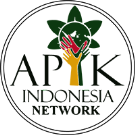STUDY OF THE COMFORT LEVEL OF GREEN OPEN SPACE IN GEDONG TATAAN SUB-DISTRICT
DOI:
10.29303/jbl.v8i2.1119Published:
2025-05-03Issue:
Vol. 8 No. 2 (2025)Keywords:
Comfort Level; Green Open Spaces; Temperature and HumidityArticles
Downloads
How to Cite
Downloads
Metrics
Abstract
The conversion of land in urban areas, especially Green Open Space (GOS), into development land causes green land to decrease, coupled with the increasing volume of vehicles. The rapid activity of manufacturing plants and excessive energy consumption are contributing factors to the increase in CO2 in the air, and the quantity and quality of O2 is declining. Green Open Space or city park is an open space that has ecological benefits, the space is filled by trees that form vegetation, socio-cultural benefits as a forum for interaction between visitors, architectural and aesthetic benefits for the beauty of the city that can provide benefits in the form of recreational and tourist spaces for the community. The existence of RTH will improve air quality and comfort in densely populated areas. The method used is to calculate the Temperature Humidity Index (THI). The research aims to analyze the temperature and humidity that affect the comfort level of GOS in Gedong Tataan. Data is taken in October 2023. The results showed that the highest temperature was found in Gedong Tataan Park, which was 34.4 oC, and the lowest temperature was found in Jejama Sidototo Park, which was 25.8 oC. The difference in temperature and air humidity in the two RTHs in Gedong Tataan District is caused by differences in the composition of vegetation types. The diversity of vegetation types can reduce air temperature and increase humidity to provide comfort in both GOSs.
Author Biography
Kurnia Albarkati Nia, Lampung University
License
Copyright (c) 2025 Kurnia Albarkati Nia, Christine Wulandari, Hari Kaskoyo, Samsul Bakri, Indra Gumay Febryano (Author)

This work is licensed under a Creative Commons Attribution 4.0 International License.
The Authors submitting a manuscript has understood that if accepted for publication on Jurnal Belantara, the copyright of the article shall be assigned to Jurnal Belantara of the Forest Study Program University of Mataram as the publisher of the journal. Copyright encompasses rights to reproduce and deliver the article in all forms and media, including reprints, photographs, microfilms, and any other similar reproductions, as well as translations.
Jurnal Belantara of the Forest Study Program University of Mataram and the Editors make every effort to ensure that no wrong or misleading data, opinions, or statements be published in the journal. In any way, the contents of the articles and advertisements published in Jurnal Belantara are the sole responsibility of their respective authors and advertisers.
We strongly encourage that manuscripts be submitted to the online journal system in http://belantara.unram.ac.id/index.php/JBL/index. Authors are required to create an account and submit the manuscripts online. For submission inquiries, please follow the submission instructions on the website. If the author has any problems with the online submission, please contact Editorial Office at the following email: [email protected]
Contributors are responsible for obtaining permission to reproduce any materials, including photographs and illustrations, for which they do not hold the copyright and for ensuring that the appropriate acknowledgments are included in the manuscript.
Users of this website will be licensed to use materials from this website following the Creative Commons Attribution 4.0 International License. No fees charged. Please use the materials accordingly.











